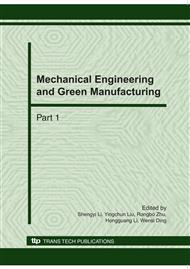p.1
p.7
p.13
p.19
p.25
p.33
p.44
p.50
Influence Factors on the Junction Line Entering for High-Temperature Alloys in Resistance Seam Welding
Abstract:
The junction line entering is the common flaw that has often arisen in the resistance welding, especially within the resistance seam welding for the high-temperature alloys. It decreases the effective nugget diameter and reduces the tensile-shear strength of welding joint. Stress concentration can be easily created in the junction line entering under moving loading, which induces crack formation and thus seriously affects the welding quality. Owing to the plenty of factors effect on the junction line entering as well as big difficulties for experiment and the high failure rates,junction line entering has the great significance for the stability of welding quality to study its forming and protective measure. The junction line entering for the high-temperature alloy GH163 was studied through the seam welding as follows: surface conditions, welding variables, and agitation force. Some reasonable solutions for entering were provided.
Info:
Periodical:
Pages:
19-24
Citation:
Online since:
October 2010
Authors:
Price:
Сopyright:
© 2010 Trans Tech Publications Ltd. All Rights Reserved
Share:
Citation:


